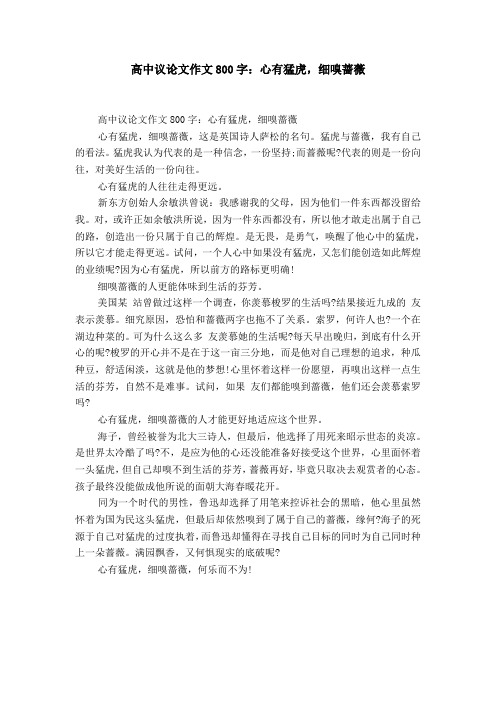关于保护环境的英语作文(环保英语作文探讨)
推荐阅读》
In recent years, the issue of environmental protection has become increasingly prominent and urgent. As we witness a series of negative impacts such as global warming, pollution, and resource depletion, it is imperative for us to take actions to safeguard our planet. Protecting the environment not only ensures a sustainable future for generations to come but also directly affects our own quality of life and health in the present. This essay will delve into the significance of environmental protection, the current challenges, and practical measures that can be taken to address these issues.

Firstly, understanding the significance of environmental protection is crucial. Our environment provides us with essential resources like clean air, water, and fertile soil, which are fundamental for all living beings on Earth to survive and thrive. A healthy ecosystem supports biodiversity, maintains ecological balance, and offers numerous ecosystem services, such as pollination of crops by insects, which is vital for food production. For instance, the Amazon rainforest, often referred to as the "lungs of the Earth", plays a key role in absorbing carbon dioxide and producing oxygen through photosynthesis. Preserving such environments helps mitigate climate change. Moreover, a clean and beautiful environment enhances people's mental well-being, providing spaces for recreation, relaxation, and fostering a sense of harmony with nature. It is also closely linked to cultural heritage, as many indigenous communities' traditions and lifestyles are deeply rooted in their natural surroundings. Protecting the environment, therefore, is an investment in preserving our cultural diversity.
However, we face a multitude of environmental challenges in the modern era. One of the most pressing is climate change, primarily caused by excessive greenhouse gas emissions from human activities, including the burning of fossil fuels for energy production, deforestation, and industrial processes. The consequences are evident in rising global temperatures, melting polar ice caps, sea level rise, more frequent and severe extreme weather events like hurricanes, floods, and droughts. These not only endanger coastal communities and ecosystems but also disrupt agricultural patterns and lead to food scarcity in some regions. Another major challenge is pollution. Air pollution from factories, vehicles, and household sources endangers public health, causing respiratory diseases and premature deaths. Water pollution resulting from industrial discharges, agricultural runoff containing pesticides and fertilizers, and improper disposal of sewage contaminates water bodies, making drinking water unsafe and harming aquatic life. Land pollution, especially plastic waste, has created vast dumps and microplastic particles that infiltrate soil and eventually enter the food chain, posing threats to terrestrial and marine organisms. Additionally, over-exploitation of natural resources, such as overfishing, illegal logging, and mining, is pushing many species to the brink of extinction and depleting non-renewable resources at an alarming rate.
Despite these daunting challenges, there are effective measures that can be implemented to protect the environment. At the individual level, simple actions like reducing energy consumption by turning off lights and electronic devices when not in use, using public transportation or carpooling instead of driving alone, recycling and properly disposing of waste to minimize landfill impact, and supporting eco-friendly products and companies can make a significant difference. For example, choosing reusable shopping bags over single-use plastic ones, opting for products with minimal packaging, and conserving water by fixing leaks and taking shorter showers. Education and awareness-raising about environmental issues are also crucial in empowering individuals to make informed choices and develop sustainable habits. In schools, incorporating environmental education into curricula can instill a sense of responsibility in the younger generation from an early age. In communities, organizing tree planting activities, clean-up drives, and environmental workshops can foster collective action and a shared commitment to protecting the local environment.
On a larger scale, governments and organizations play a vital role. Formulating and enforcing stringent environmental regulations is necessary to curb pollutants and promote sustainable practices in industries. For instance, setting emission standards for factories and vehicles, banning single-use plastics or imposing taxes on them to encourage alternatives, and establishing protected areas for wildlife conservation. Investing in renewable energy sources like solar, wind, and hydro power is a key strategy to reduce reliance on fossil fuels. Governments can provide incentives for research and development in clean energy technologies, as well as subsidies for households and businesses to adopt renewable energy systems. Promoting sustainable agriculture practices is another important aspect. Encouraging organic farming methods that avoid the use of chemical fertilizers and pesticides can improve soil fertility in the long run and reduce water pollution. Supporting agroforestry models where farmers integrate trees and shrubs into their fields can enhance biodiversity, sequester carbon, and provide additional income streams from products like fruits and nuts. Additionally, international cooperation is essential for tackling global environmental issues. Countries need to collaborate on research, share technologies, and commit to international agreements like the Paris Agreement to set collective targets for reducing greenhouse gas emissions and adapting to the impacts of climate change. Non-governmental organizations (NGOs) also contribute by raising public awareness, advocating for policy changes, and implementing conservation projects around the world. For example, organizations like Greenpeace and World Wildlife Fund work tirelessly to protect endangered species and campaign against destructive practices like whaling and illegal logging. By working together across borders and sectors, we can create a unified front in the battle for environmental protection.
In conclusion, protecting the environment is a complex and multifaceted endeavor that requires the concerted efforts of individuals, communities, governments, and organizations worldwide. Understanding the significance of our natural surroundings is the first step towards taking responsibility for their preservation. Facing the current challenges head-on with practical measures ranging from daily actions to large-scale policies can pave the way for a more sustainable future. By embracing the urgency of the situation and committing to positive changes, we can ensure that our planet remains a vibrant and habitable home for all creatures, present and future generations alike. Let us all remember that every small action counts in this grand endeavor of environmental stewardship.

文章大纲:
1.引言
- 提出环境保护的紧迫性及重要性。
2.环境保护的意义
- 提供基本资源与维持生态系统平衡。
- 对生物多样性、人类健康和文化传承的作用。
3.当前环境面临的挑战
- 气候变化及其影响(全球变暖、海平面上升等)。
- 各种污染问题(空气污染、水污染、土地污染)及资源过度开采的危害。
4.保护环境的措施
- 个人层面:节能、减排、垃圾分类与环保消费选择、教育宣传等。
- 政府和组织层面:制定法规、发展可再生能源、推广可持续农业、国际合作等。
5.结论
- 强调各方合作的重要性及为可持续未来努力的决心。
本文系作者个人观点,不代表本站立场,转载请注明出处!















